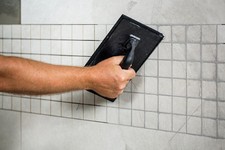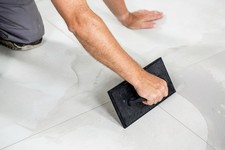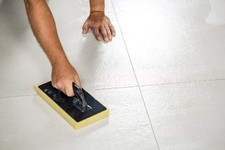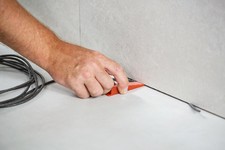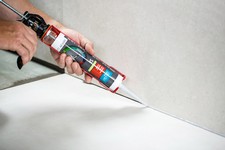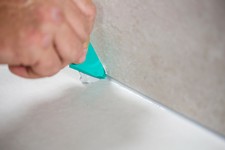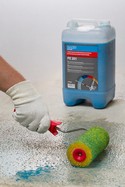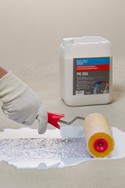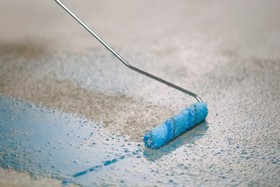Gluing of large-format floor nad wall tiles
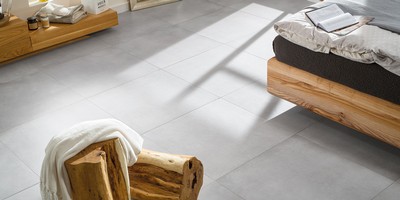 Large-format floor tiles and wall tiles are the current trends both in private construction and in public buildings. LASSELSBERGER, s.r.o. satisfies the current requirements of clients - with the maximum wall and floor tile formats with plain tile decors in a minimalistic design. The RAKO 2017 new series offers a new floor tile format of 80 x 80 cm (the sizes of 60 x 60, 20 x 120 and 30 x 120 cm are also offered), and the format range of wall tiles will be extended with a size of 30 x 90 cm. The current era of large-format tiles poses a challenge for many tile laying companies, both from the technical and workmanship points of view.
Large-format floor tiles and wall tiles are the current trends both in private construction and in public buildings. LASSELSBERGER, s.r.o. satisfies the current requirements of clients - with the maximum wall and floor tile formats with plain tile decors in a minimalistic design. The RAKO 2017 new series offers a new floor tile format of 80 x 80 cm (the sizes of 60 x 60, 20 x 120 and 30 x 120 cm are also offered), and the format range of wall tiles will be extended with a size of 30 x 90 cm. The current era of large-format tiles poses a challenge for many tile laying companies, both from the technical and workmanship points of view.
Type of structure
- Penetration PE 201, PE 202
- Stoppers
- Self-levelling stoppers LE 20, LE 30 for floors
- LE 21, LE 10 for walls
- Adhesive AD 530, AD 530 MAX, AD 700
- Grouting material
- GF DRY or GF BIO for interiors
- GFS for exteriors
- Flexible sealing cement
- for interiors – silicone SI + separation cord PES
- for exteriors – polyurethane SAB + separation cord PES
Work process - detailed description
Base
The concrete base must be mature, left to mature for a minimum of 28 days, and has a residual moisture content of less than 5%. Residual moisture content must be kept below 0.5% (for anhydrites), resp. below 0.3% (for underfloor heating). The base must be solid, free of impurities or unevenness. To equalize base absorption, the penetration PE 202 should be used at the appropriate dilution rate (approx. 1:3‑5), or the deep penetration PE 201 with no dilution.
Base levelling
The laying of large-format ceramics into a thin bed requires high demands for base levelling, when even the allowed tolerance of 2 mm below a 2 m lath can create inequality. Stoppers or self-levelling screed are used for levelling. After base penetration, floors can be levelled using the self-levelling materials with the optimum flowing properties LE 20 or the quick setting LE 30. For walls, the levelling stopper LE 21 or LE 10 with fibres can be used.
Laying plan design
Prior to the laying, this step is one of the most important steps. Careful measurement of the laying along the walls and floors can be ensured using a cross-type laser aiming device. When preparing a laying plan at the walls, we must strictly follow the principles of finish cutting in the corners (greater than ½ of format). At the floors, we must take into consideration the structural and object extensions in the base, which are projected into the laying plan across the width of the extensions.
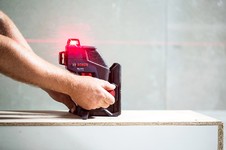
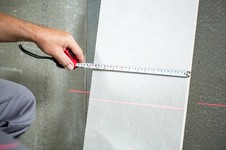
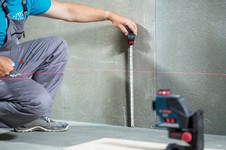
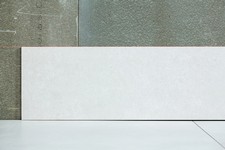
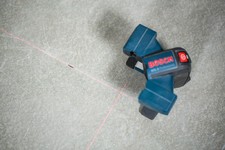
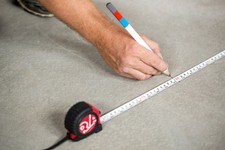
Gluing of large-format ceramic tiles
For gluing wall tiles and floor tiles up to a format of 60 x 60 a 30 x 90 cm, it is suitable to use the sealing cement
AD 530, resp. the new sealing cement AD 530 MAX, type C2TES1, which is intended for larger formats. This sealing cement has improved properties suitable for large formats – high adhesion and flexibility (class S1), easy workability, high resistance to slip, long open time, stress-free curing, and guaranteed resistance to efflorescence. This adhesive is also suitable for gluing of wall tiles in exteriors up to a format of 60 x 60 cm. For gluing of large-format wall tiles on extremely exposed areas (high load, thermal stress up to + 70°C, dimensional changes in the base) and artificial stone panels (natural, resin-bonded materials), we prepared for 2017 a quick-setting two-component compound adhesive with the brand name AD 700, C2FTES2 type, with high adhesion and transverse deformation (S2 ≥ 5 mm). When laying floor tiles of larger formats, it is necessary to create a contact layer of bonding cement on the reverse side of the wall tiles, known as two-contact gluing - buttering-floating. The bonding cement is applied with a toothed applicator in one direction, namely from the edge of the expected laying of wall tiles. The joint width should not be less than 2 mm.
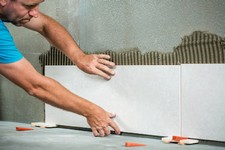
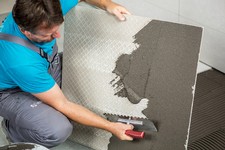
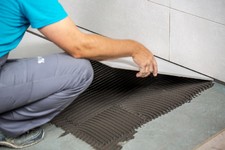
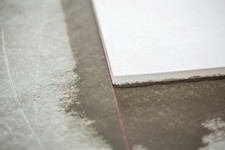
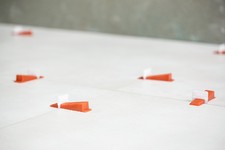
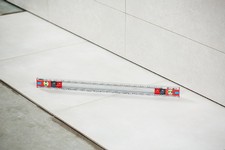
Jointing
Jointing can be made after maturity of the adhesive, at least 2 days after gluing the tiles, after 3‑4 days for vitrified, non-absorbent bases, and 5‑7 days for non-absorbent bases. The flexible material GF BIO, or GF DRY, both of CG2WA categories, is to be used for jointing. The superflexible jointing material with GFS fibres of class CG2WAS1 is intended for exterior applications. It goes without saying that the strict observance of expansion, both peripheral and intermediate, must be met at all formats. Intermediate expansion must be performed on areas of max. 6 x 6 m, and with floor heating of max. 3 x 3 m. For proper functioning, flexible expansion joints are performed after their grouting, when the PES separation cord is put into the clean joints, and subsequently SI silicone in interiors, resp. SAB polyurethane in exteriors.
